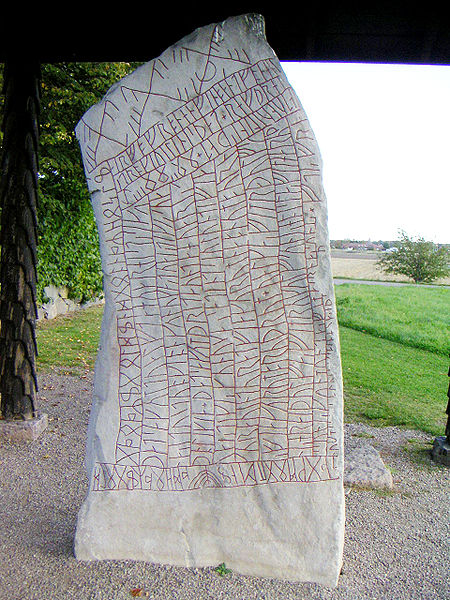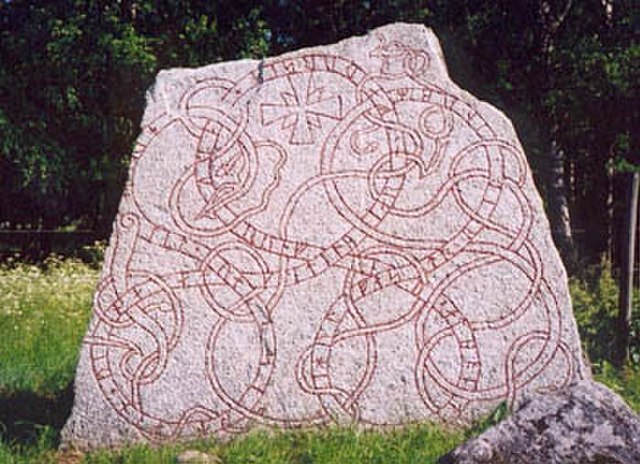The medieval runes, or the futhork, was a Scandinavian runic alphabet that evolved from the Younger Futhark after the introduction of stung runes at the end of the Viking Age. These stung runes were regular runes with the addition of either a dot diacritic or bar diacritic to indicate that the rune stood for one of its secondary sounds. The medieval futhork was fully formed in the early 13th century. Due to the expansion of its character inventory, it was essentially possible to have each character in an inscription correspond to only one phoneme, something which was virtually impossible in Younger Futhark with its small inventory of 16 runes.
Leaf (f. 27r.) of Codex Runicus, a vellum manuscript from c. 1300 containing one of the oldest and best preserved texts of the Scanian Law, written entirely in runes
Medieval rune-variations in ABC-order. More variations exists.
A rune is a letter in a set of related alphabets known as runic alphabets native to the Germanic peoples. Runes were used to write Germanic languages before they adopted the Latin alphabet, and for specialised purposes thereafter. In addition to representing a sound value, runes can be used to represent the concepts after which they are named (ideographs). Scholars refer to instances of the latter as Begriffsrunen. The Scandinavian variants are also known as fuþark, or futhark, these names derived from the first six letters of the script, ⟨ᚠ⟩, ⟨ᚢ⟩, ⟨ᚦ⟩, ⟨ᚨ⟩/⟨ᚬ⟩, ⟨ᚱ⟩, and ⟨ᚲ⟩/⟨ᚴ⟩, corresponding to the Latin letters ⟨f⟩, ⟨u⟩, ⟨þ⟩/⟨th⟩, ⟨a⟩, ⟨r⟩, and ⟨k⟩. The Anglo-Saxon variant is futhorc, or fuþorc, due to changes in Old English of the sounds represented by the fourth letter, ⟨ᚨ⟩/⟨ᚩ⟩.
Runes
The inscription on the Einang stone (AD 350–400), reading [Ek go]ðagastiz runo faihido ("[I, Go]dguest painted/wrote this runic inscription"), is the earliest Germanic epigraphic attestation of the term.
An inscription using cipher runes, the Elder Futhark, and the Younger Futhark, on the 9th-century Rök runestone in Sweden
A Younger Futhark inscription on the 12th-century Vaksala Runestone in Sweden



![The inscription on the Einang stone (AD 350–400), reading [Ek go]ðagastiz runo faihido ("[I, Go]dguest painted/wrote this runic inscription"), is the](https://upload.wikimedia.org/wikipedia/commons/thumb/2/2c/Einangsteinen_inscript.jpg/640px-Einangsteinen_inscript.jpg)

